Photos inside cave dwellings and villages from around the world
Fern McErlane

- For millennia, people have lived in cave dwellings around the world.
- Though few are still inhabited, most are open to tourists.
Many historical cave villages dug into sandstone or volcanic rock have survived around the world, with families still living in some, and others now open for tourists to visit.
At the Kome Caves in Lesotho, a small community of residents do regular upkeep on their cave dwellings by reapplying mud and manure each year; elsewhere, in Kinver, England, as many as 50 people may have lived in a single cave village at one time.
One cave hotel in Tunisia, Hotel Sidi Driss, was even a filming location for "Star Wars."
Take a look at cave homes around the world.
These cottages built into sandstone cliffs at Kinver Edge are the last of their kind in England.
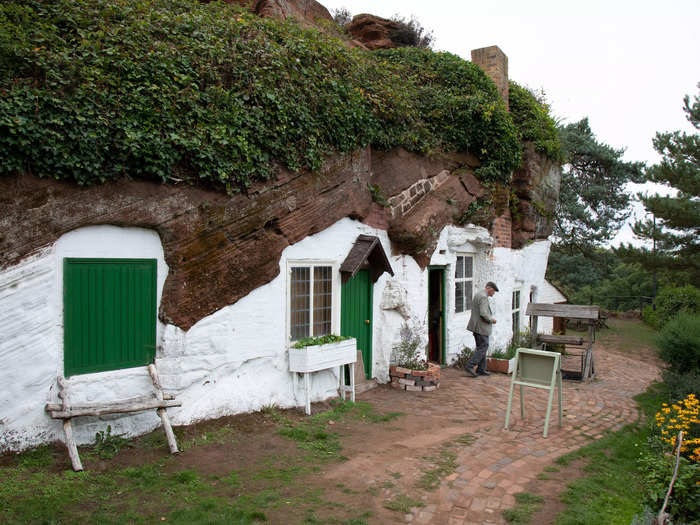
In the United Kingdom, a set of cave houses at Kinver were inhabited up until the 1960s, according to Claire Hale, Visitor Operations and Experience Manager at the National Trust.
The homes lie on the border between Worcestershire and Staffordshire and are guessed to have been lived in since 1777.
Hale told Insider that the most well-known dwellings are at Holy Austin Rock. She said that it's believed the name comes from these dwellings' previous use as a hermitage, a religious site.
Inside, several Kinver Edge cave homes have been restored and filled with classic furniture and decorations.
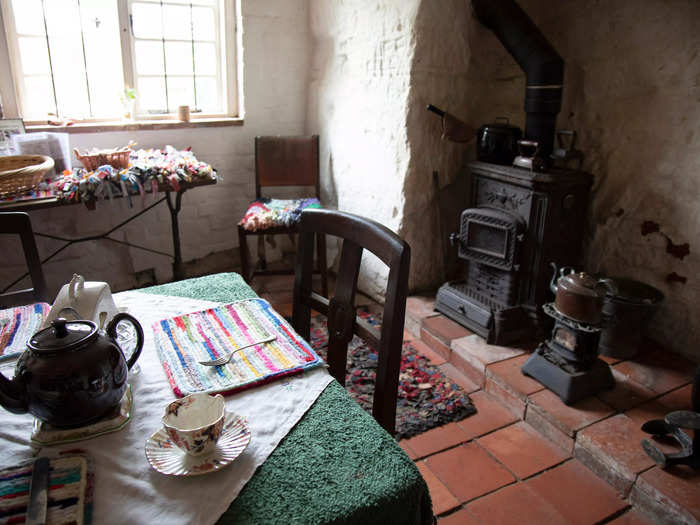
These homes are set over three levels dug deep into the soft red sandstone, with the Kinver Committee stepping in to restore this site in the 1990s.
Now owned by the National Trust and open to the public, the homes are filled with furniture, decorations, and stoves. One home has been restored to a traditional Victorian style.
Records show that at its peak, 11 families may have lived at Holy Austin at one time — easily upwards of 50 people, according to Hale. This may have included farm workers, postmen, washerwomen, housekeepers, gardeners, cooks, forge workers, and more.
"People think living in a cave must have been a terrible life," Hale told Insider.
"But they had fresh air, greenery all around them, lots of space," she went on. "They would grow their own fruit and vegetables, they could have livestock. There was no pollution, there was very little disease. So actually they had a really healthy lifestyle."
Cappadocia in Turkey is famous for its cave homes, and some are still lived in today.
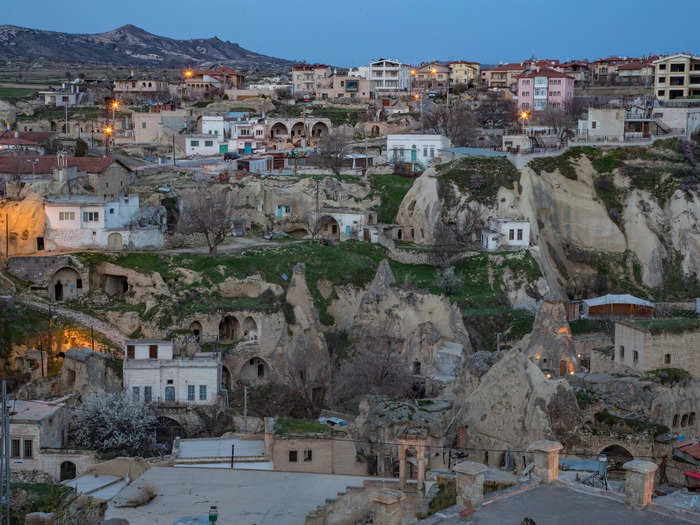
In Ürgüp, Cappadocia, people created homes and warehouses from the natural sandstone surroundings.
The area has a lengthy history, with scholars dating the dwellings back to at least the Byzantine Period, according to its UNESCO World Heritage submission. It also has a bloody history as Ürgüp's Greek population was targeted during the Pontic Greek genocide, which saw the Ottoman Empire target and kill Greek inhabitants in the region from 1914 to 1923.
The town is a short distance from both the famous Fairy Chimneys, and a collection of churches cut into volcanic rock at the Göreme Open Air Museum.
Some Cappadocia cave homes have now been turned into boutique hotels.
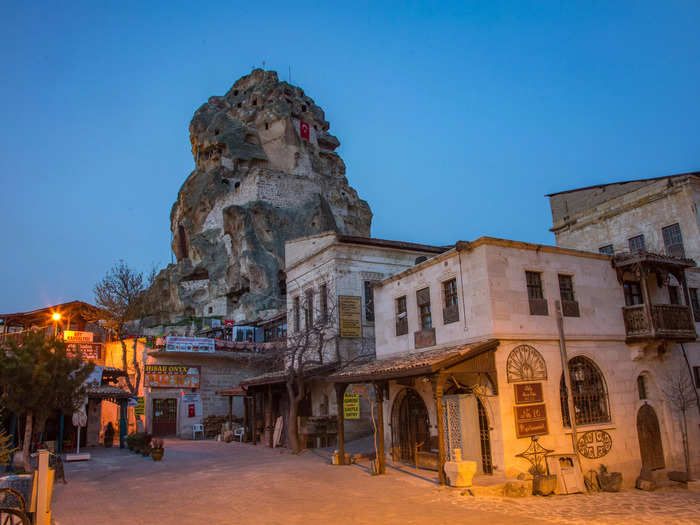
According to Turkey Travel Planner, until recently tourists could only visit these cave homes if they knew the owner. Tours now run only a few times a year, with funds from the tours going towards historical restoration.
Some of the stone-cut houses are now luxury boutique hotels, according to Lonely Planet, bringing tourists and residents back to the town.
Local families of Lesotho, Southern Africa, still live in traditional mud dwellings known as the Kome Caves.
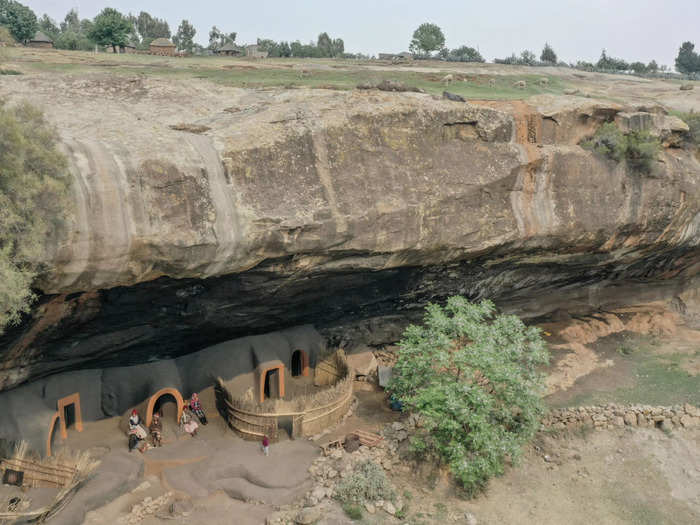
The Kome Caves in Berea, Lesotho, are still home to several families, the Guardian reported.
Now classified as a National Heritage site, these caves originally were used as hideouts for Basia and Bataung clan members during the 19th century, according to the Guardian.
Residents of the Kome Caves do regular upkeep on their homes by reapplying mud and manure to the walls.
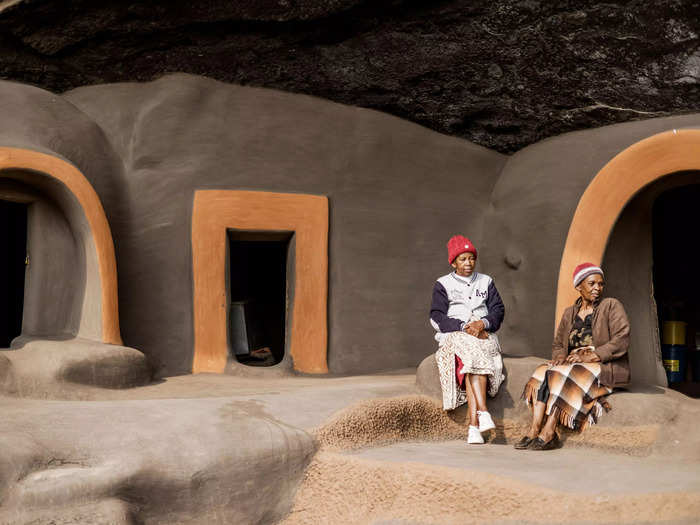
The walls and floors of these cave homes are made from both mud and manure, according to Roof of Africa Tours, which is reapplied every year and provides insulation to each room.
The Guardian reported that many residential families are crop and livestock farmers, although some have opened their homes to tourists to make money.
Cave homes in Gharyan, Libya, are dug vertically into the ground with a center courtyard.
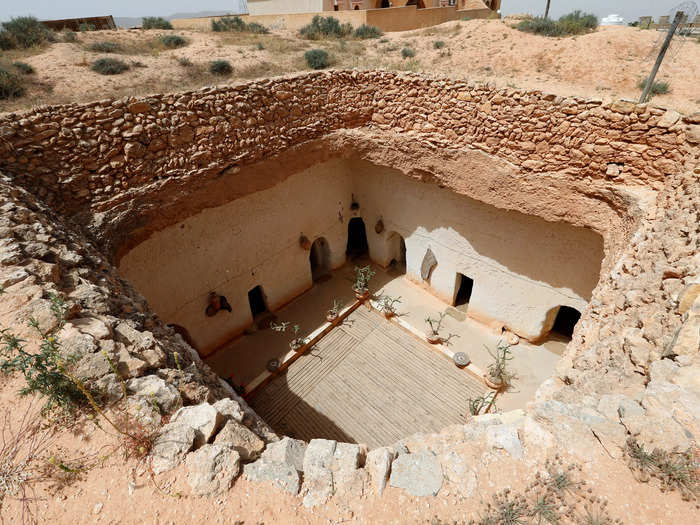
In the mountains of Libya, communal cave homes were dug into the ground with a central square courtyard and shared smaller caves for living and cooking.
This residence in the western town of Gharyan, south of Tripoli, was previously home to eight families, according to Reuters.
"The women would go to the mountains to get wood and water before we the children would wake up. Then they would make tea together while the men looked after the animals," a former resident named Belhaj, who spent the first 10 years of his life in this dwelling, told Reuters.
Some families still visit their Gharyan cave homes in the summer, and the homes are open to the public.
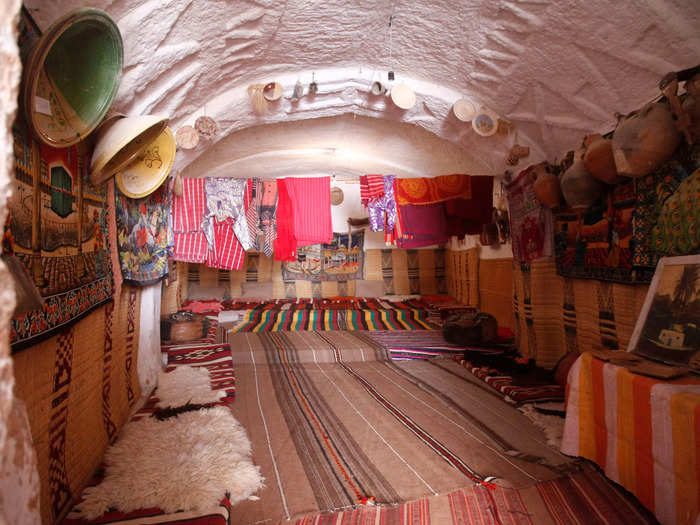
Reuters reported that with traditional Berber decorations like colorful rugs and pottery, each family's cave featured three areas — a living space, a bedroom for children, and a separate bedroom for parents.
During fighting in Libya, many fled to these caves to escape shelling. Today, the families have largely moved out, but one member interviewed by Reuters says they still visit in the summer and open the homes to show tourists their heritage.
A man in Herzliya, Israel, is fighting authorities to remain in his self-created beachside cave home.
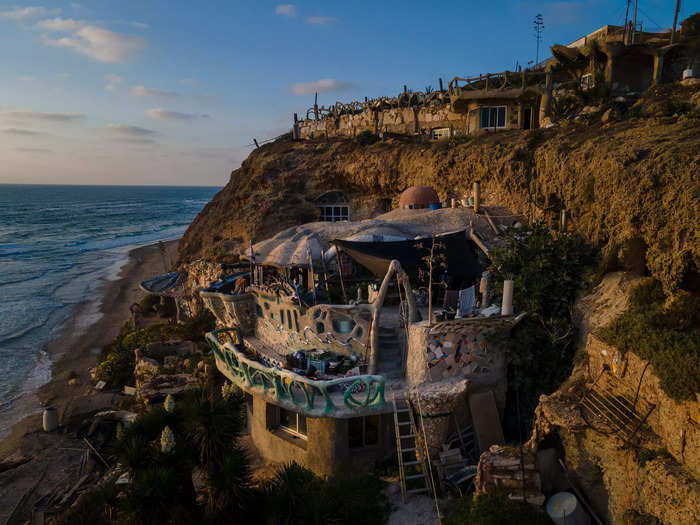
Overlooking the Mediterranean Sea, a man named Nissim Kahlon has turned a small cave into a tunnel-like home where he has now lived for 50 years, AP News reported.
Accessed via a ladder leading from the beach, Kahlon's home is decorated outside with shells and pebbles. It even has a plumbing system and electricity.
The inside of the Herzliya coastal cave home has many rooms decorated with handcrafted mosaics.
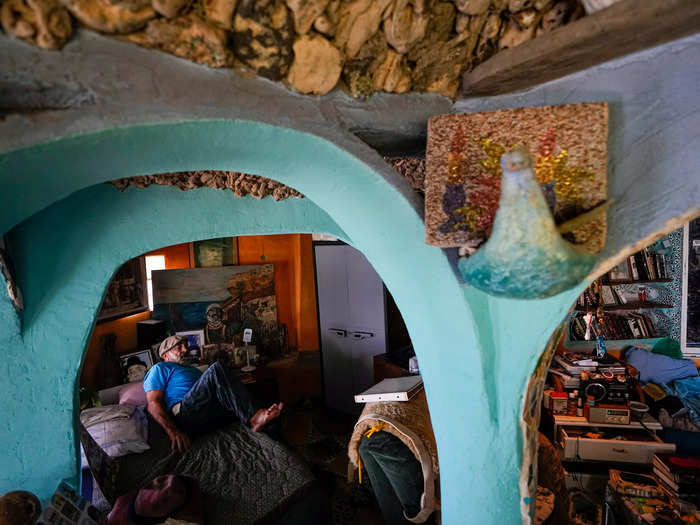
Inside, chiseled tunnels are decorated with bright-colored paint and detailed mosaics created from discarded tiles.
However, this year Kahlon is now facing eviction from Israel's Environmental Protection Agency, who claim the home's structure threatens the cliffside and the safety of public visitors to the beach.
Insider previously reported that he has no plans to leave the residence despite local authorities' insistence.
A village of hobbit-style cave homes was carved in Langenstein, Austria.
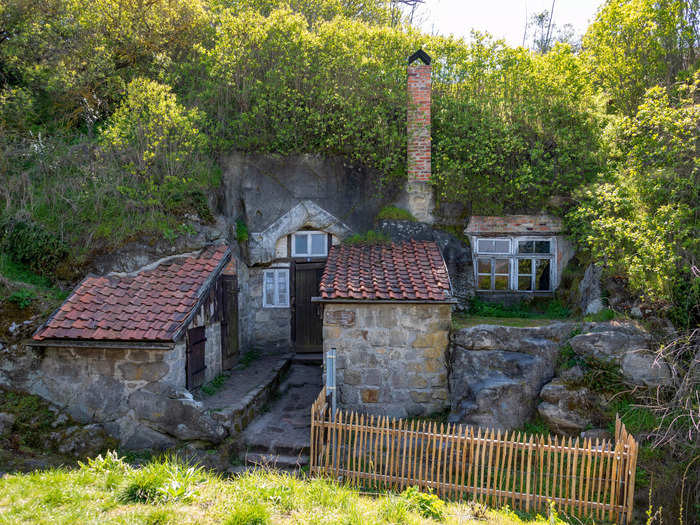
The Harz village in Saxony-Anhalt features a set of carved cave homes dug out by migrant farmworkers who arrived during a housing crisis in 1855, according to Atlas Obscura.
Earlier cave dwellings had existed in the sandstone, with the local council deciding to hold a lottery to decide which working families would be granted space there, Atlas Obscura reported.
Those chosen faced the tough challenge of digging their own home and also had to pay a month's salary for the right to live there for the rest of their lives.
Only five of the Langenstein homes are open to the public, with the last resident dying just over 100 years ago.
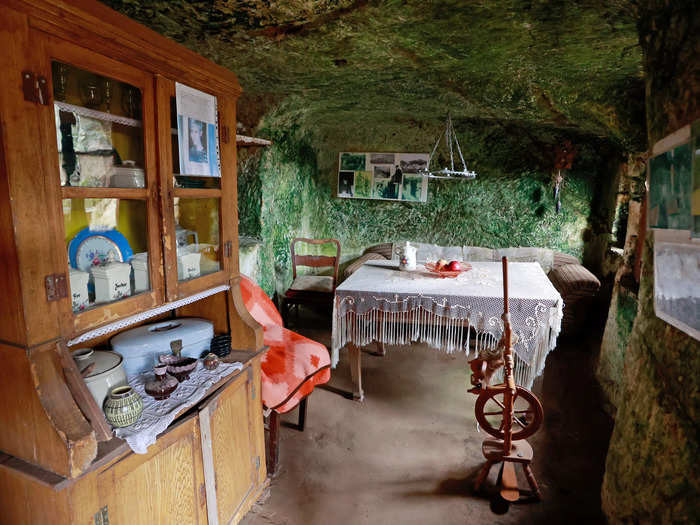
On average, each family took a year and a half to complete their home, Atlas Obscura reported, with the last resident dying in 1910.
German tourism site Entdecke Deutschland reported that the cave homes were used for storage or as animal stables for the last 100 years until they became a tourist attraction.
Ten of the homes have been preserved, though only five are open to visitors for weekly guided tours, its tourist information site states.
In Matmata, Tunisia, a traditional Berber village is open to tourists to promote local culture.
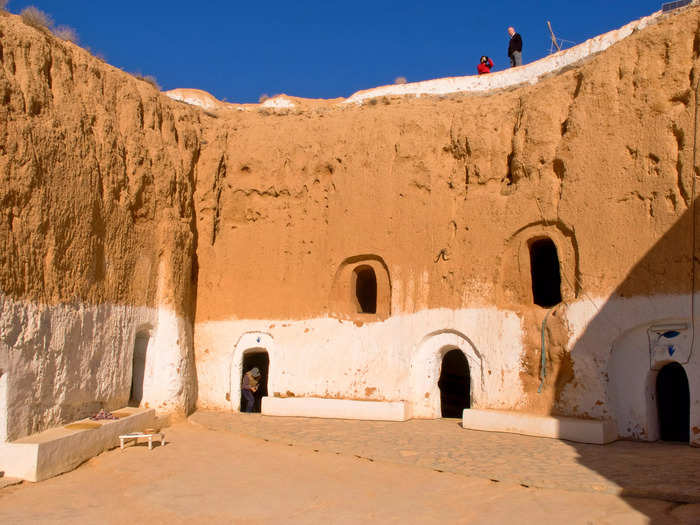
Between the Tunisian towns of Matmata and Tamezret, traditional Berber cave homes are open to tourists.
The underground rooms and subterranean courtyards of Matmata have seen many visitors following Tunisia's 2011 revolution, the Independent reported, with locals welcoming the interest in their Berber culture and heritage.
One Matmata cave hotel was used as a location in "Star Wars."
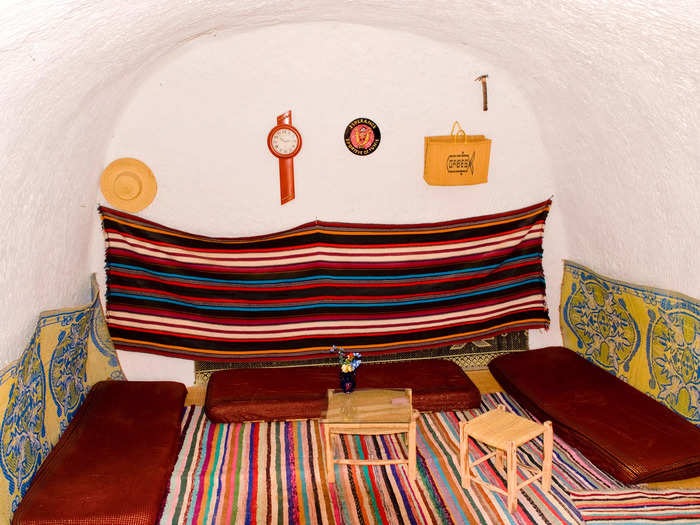
Around 1,200 "troglodyte" homes have been preserved in the area, with some still inhabited by locals, according to the publication The Arab Local.
In the center of Matmata, tourists can choose to stay in troglodyte cave rooms at the Hotel Sidi Driss, which proudly notes that the film "Star Wars: Episode IV — A New Hope" was shot here in 1976 and used as Luke Skywalker's childhood home.
Popular Right Now
Popular Keywords
Advertisement